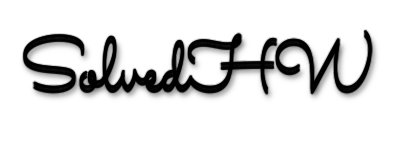
Assignment 3
Question 1: DCT Coding (20 points)
In this question you will try to understand the working of DCT in the context of JPEG. Below is an 8x8 luminance block of pixel values.
188
180
155
149
179
116
86
96
168
179
168
174
180
111
86
95
150
166
175
189
165
101
88
97
163
165
179
184
135
90
91
96
170
180
178
144
102
87
91
98
175
174
141
104
85
83
88
96
153
134
105
82
83
87
92
96
117
104
86
80
86
90
92
103
• Using the 2D DCT formula, compute the 64 DCT values. Assume that you quantize your DCT coefficients uniformly with Q=100. What does your table look like after quantization. (5 points)
• In the JPEG pipeline, the quantized DCT values are then further scanned in a zigzag order. Ignoring your DC value, show the resulting zigzag scan AC values when Q=100, (2 points).
• For this zigzag AC sequence, write down the intermediary notation (5 points)
• Assuming these are luminance values, write down the resulting JPEG bit stream. For the bit stream you may consult standard JPEG VLC and VLI code tables. You will need to refer to the code tables from the ITU-T JPEG standard which also uploaded with your assignment. (6 points)
• What compression ratio do you get for this luminance block ? (2 points)
Note – you only need to turn in written/printed answers. To compute your DCT, you may write a script in a language of your choice or use any conventional libraries to do so.
Programming on Block Based Motion Compensation (80 points)
This programming assignment will help you gain an understanding of issues that relate to block-based motion compensation. Note – use of any external libraries is not allowed, you are expected to explicity implement the details as instructed below.
Given two consecutive image frames – framen and framen+1, write a function that creates and display two images as follows
• a predicted or reconstructed frame for framen+1 built using motion compensation techniques from framen and,
• error difference frame.
You will be using the full brute force method, by dividing framen+1 into 16x16 blocks and performing motion compensation within an input search area k. The details of the algorithm have been explained in the class lecture and in the textbook. Here is how your program will be invoked
MyMotionPredictor.exe framen.rgb framen+1.rgb k
Input to your program will be three parameters - two consecutive rgb image frames of size 640x320 (first parameter is previous frame, second parameter is frame to predict) and search parameter k, which will define the search area to search into, k can have values from 1 to 32. Speed is important, but more important is the accuracy of your output.
Although your inputs are .rgb frames, you will need to compute motion vectors only on the Y channel – so your process will produce and display two gray level images.
Conversion of RGB to YUV
Given R, G and B values the conversion from RGB to YUV is given by
Y
0.299
0.587
0.114
R
U
=
0.596
-0.274
-0.322
G
V
0.211
-0.523
0.312
B
Remember that if RGB channels are represented by n bits each, then the YUV channels are also represented by the same number of bits. In this assignment you are asked to use just the Y value for doing motion prediction.
Example output is shown below
predicted Y channel for framen+1 error difference for Y channel
What should you submit?
• Your source code, and your project file or makefile. Please confirm submission procedure from the TAs. Please do not submit any binaries or data sets. We will compile your program and execute our tests accordingly.
• Along with the program, also submit an electronic document (word, pdf, pagemaker etc) for the written part and any other extra credit explanations.


